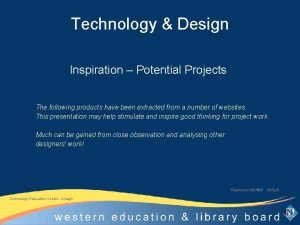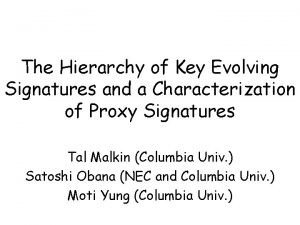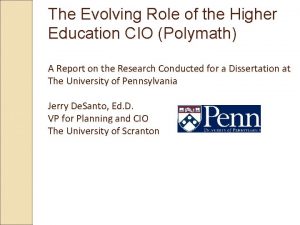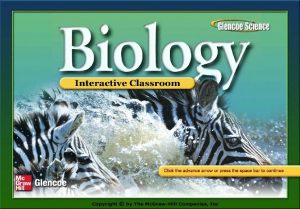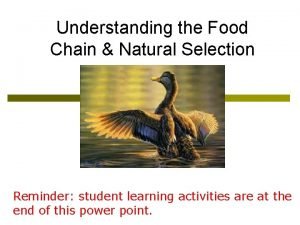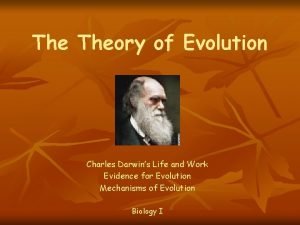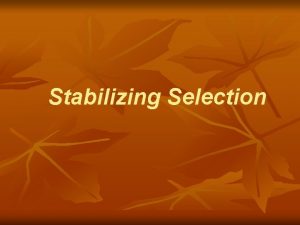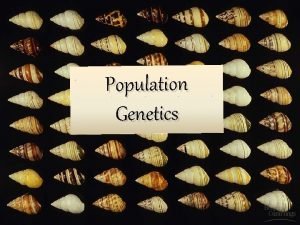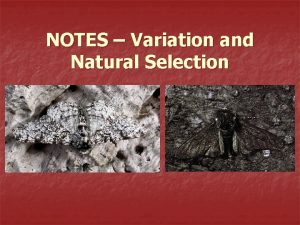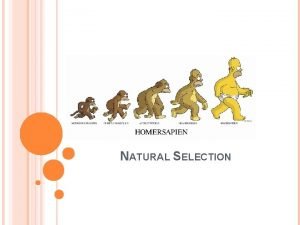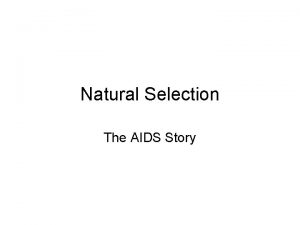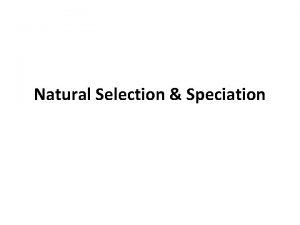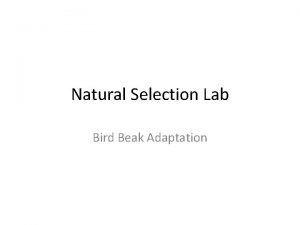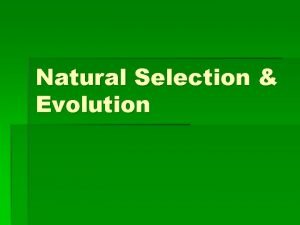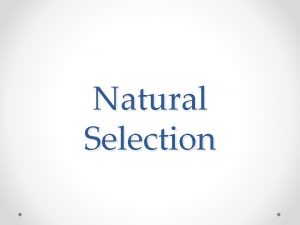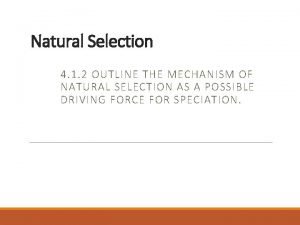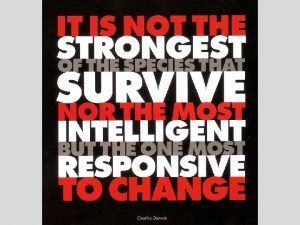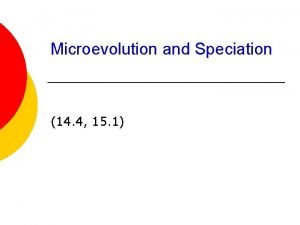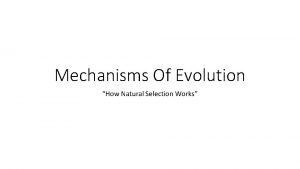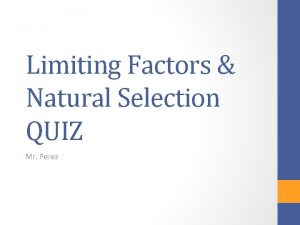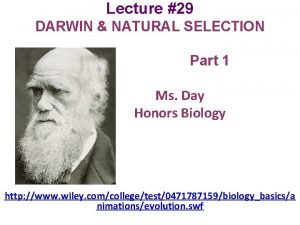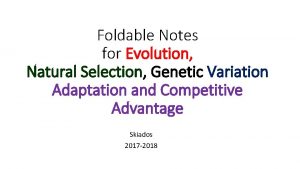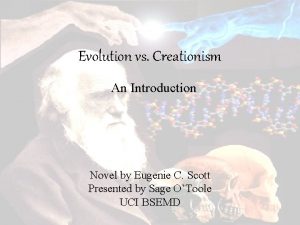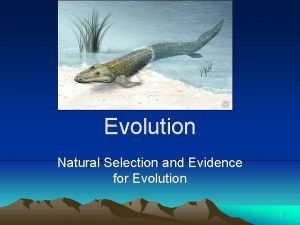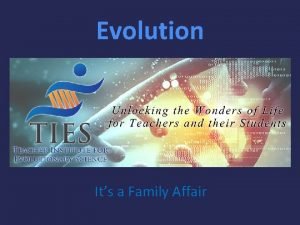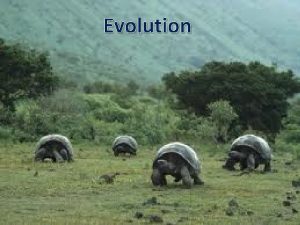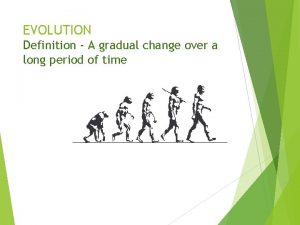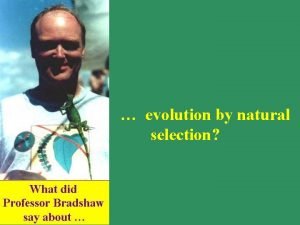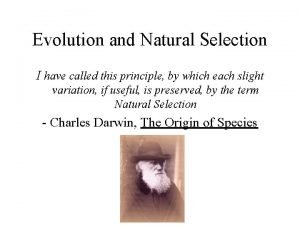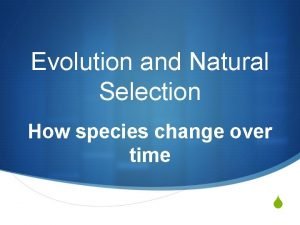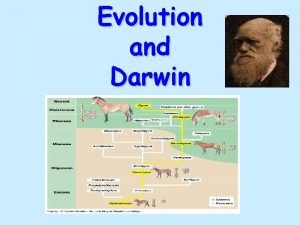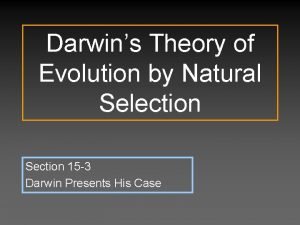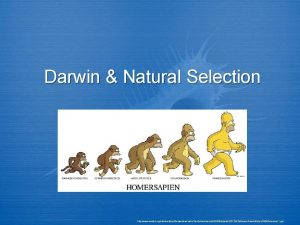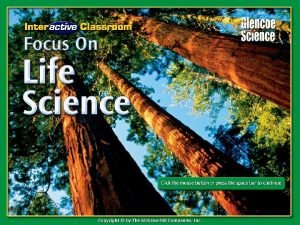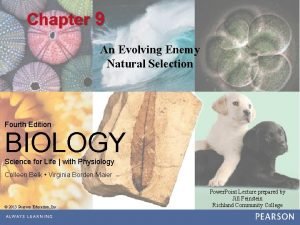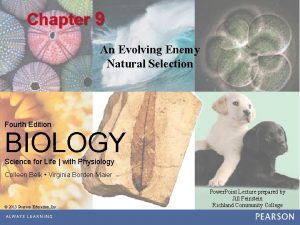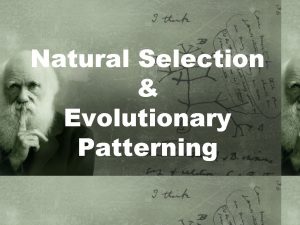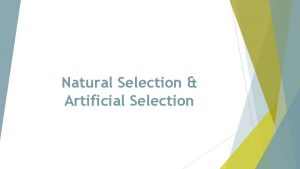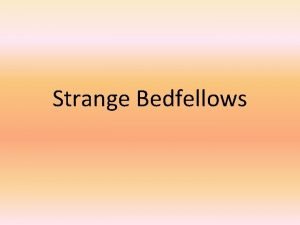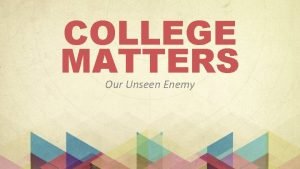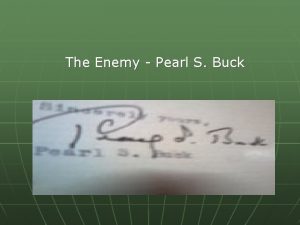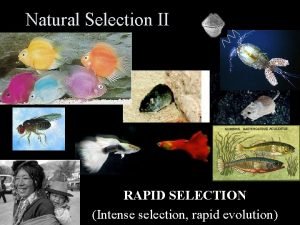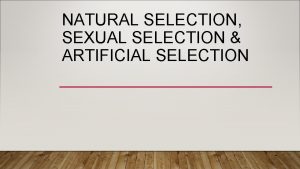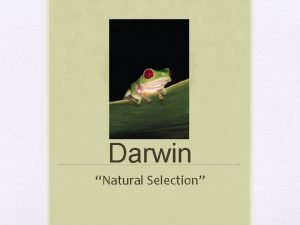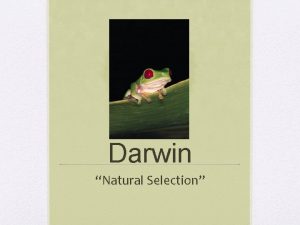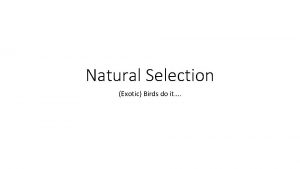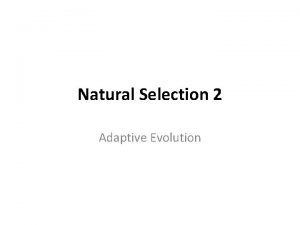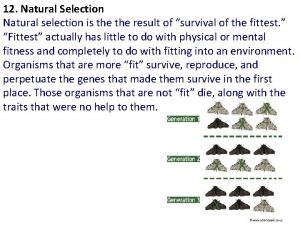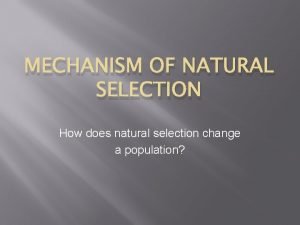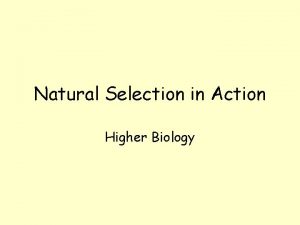Chapter 10 Natural Selection An Evolving Enemy Copyright















































- Slides: 47

Chapter 10 Natural Selection An Evolving Enemy Copyright © 2010 Pearson Education, Inc.

Chapter 10 Section 1 Tuberculosis Return of an Ancient Killer Copyright © 2010 Pearson Education, Inc.

10. 1 Return of an Ancient Killer Tuberculosis § Tuberculosis (TB) has infected humans for 1000 s of years § Evidence of TB has been found in Egyptian mummies § Hippocrates described a TB-like condition § In 1906, TB accounted for 2 out of every 1000 deaths in the U. S. Copyright © 2010 Pearson Education, Inc.

10. 1 Return of an Ancient Killer What is Tuberculosis? § TB is caused by bacterium, Mycobacterium tuberculosis § 2 billion people carry TB § New infections occur at rate of 1 per second § TB causes roughly 2 million deaths per year Copyright © 2010 Pearson Education, Inc. Figure 10. 1

10. 1 Return of an Ancient Killer - What is Tuberculosis? Symptoms of TB include: § § Cough that produces blood Fever Fatigue Period of wasting – patient becomes weaker and thinner § Led to calling the disease “consumption” Copyright © 2010 Pearson Education, Inc.

10. 1 Return of an Ancient Killer - What is Tuberculosis? § Consumptive symptoms occur because of damage to lung tissues. Copyright © 2010 Pearson Education, Inc. Figure 10. 2

10. 1 Return of an Ancient Killer - What is Tuberculosis? § Testing is by x-ray of lungs and skin test § Transmission of TB occurs through the air, from infected individuals § A single sneeze can contain 40, 000 droplets, all containing infectious bacteria Copyright © 2010 Pearson Education, Inc. Figure 10. 4

10. 1 Return of an Ancient Killer Treatment – and Treatment Failure § 19 th and early 20 th century – treatment consisted of “sanitariums” § Discovery of antibiotics revolutionized TB treatment § Since the 1980 s, scientists have noticed an increase in TB that is resistant to antibiotics. § Because of resistance to antibiotics, the number of TB cases worldwide is increasing. Copyright © 2010 Pearson Education, Inc.

END Chapter 10 Section 1 Tuberculosis Return of an Ancient Killer Copyright © 2010 Pearson Education, Inc.

Chapter 10 Section 2 Natural Selection Causes Evolution Copyright © 2010 Pearson Education, Inc.

10. 2 Natural Selection Causes Evolution Darwin discussed two ideas in Origin of Species 1. Common descent 2. Natural selection § § Natural selection is considered to be the primary cause of evolution Other factors include genetic drift and sexual selection (chapter 11) Copyright © 2010 Pearson Education, Inc.

10. 2 Natural Selection Causes Evolution Natural selection is an inference based on four observations 1. Individuals within populations vary 2. Some of the variation within individuals can be passed on to their offspring 3. Populations of organisms produce more offspring than will survive 4. Survival and reproduction are not random Copyright © 2010 Pearson Education, Inc.

10. 2 Natural Selection Causes Evolution 1. Individuals within populations vary. § This is true of human and non-human populations. § Variation can include traits other than appearance, such as blooming time in flowers. Copyright © 2010 Pearson Education, Inc. Figure 10. 6

10. 2 Natural Selection Causes Evolution 2. Some of the variation within individuals can be passed on to their offspring. Darwin noticed that animal breeders could get exaggerated traits through selective breeding. Copyright © 2010 Pearson Education, Inc. Figure 10. 7

10. 2 Natural Selection Causes Evolution 3. Populations of organisms produce more offspring than will survive. § Even slow-breeding animals can produce large populations quickly. Copyright © 2010 Pearson Education, Inc.

10. 2 Natural Selection Causes Evolution 3. Populations of organisms produce more offspring than will survive. If a female elephant (colored pink) lives a full fertile lifetime, she will bear about six calves in about 90 years. On average, half of her calves will be female. Shelf = Available resources Generation 0 = 2 elephants Generation 1 = 6 elephants Generation 2 = 18 elephants Copyright © 2010 Pearson Education, Inc. Generation 3 = 54 elephants Figure 10. 8

10. 2 Natural Selection Causes Evolution 4. Survival and reproduction are not random § Fitness: Relative survival and reproduction of one variant § Adaptation: Traits that increase individual fitness in an environment § Individuals with adaptations for a particular environment are more likely to survive and reproduce Copyright © 2010 Pearson Education, Inc.

10. 2 Natural Selection Causes Evolution 4. Survival and reproduction are not random. Number of individuals 1976 Bill depth Average bill depth of drought survivors Average bill depth before drought 1978 Bill depth (mm) Copyright © 2010 Pearson Education, Inc. Figure 10. 9

10. 2 Natural Selection Causes Evolution Adaptations do not only affect survival. § Any trait that increases the number of offspring produced is an adaptation § A flower’s reproduction is impacted by traits that affect the number of pollinators it receives. § Therefore, color or nectar production might be adaptations. Copyright © 2010 Pearson Education, Inc. Figure 10. 10

10. 2 Natural Selection Causes Evolution Darwin’s Inference: Natural Selection Causes Evolution § Result of natural selection is § Favorable inherited variations tend to increase in frequency § Unfavorable variations tend to be lost § End result is a change in the traits of individuals in a population over generations (i. e. evolution) Copyright © 2010 Pearson Education, Inc.

10. 2 Natural Selection Causes Evolution Testing Natural Selection § Artificial Selection: Selection imposed by human choice § Breeds of pigeons studied by Darwin arose through artificial selection § Breeds of dog have been artificially selected by humans Copyright © 2010 Pearson Education, Inc.

10. 2 Natural Selection Causes Evolution Testing Natural Selection in the Lab § In laboratory, environmental conditions can be manipulated and effects on population examined § Example: alcohol in fruit flies § Scientists examined alcohol metabolism in fruit flies § All animals have enzymes to metabolize alcohol § Variations in ability to metabolize alcohol exist in populations Copyright © 2010 Pearson Education, Inc.

10. 2 Natural Selection Causes Evolution Testing Natural Selection Percent of population that metabolized alcohol rapidly § Natural selection in the Lab Increase in percent of fast-metabolizing flies No change in alcohol-metabolizing rate Generation 1 57 Fly population in normal laboratory environment Copyright © 2010 Pearson Education, Inc. After 57 generations, all flies in the high-alcohol environment are fast processors of alcohol. As a result, the average rate of alcohol metabolism is twice the rate of the unmodified population. Generation 1 57 Fly population in a high-alcohol laboratory environment Figure 10. 12

10. 2 Natural Selection Causes Evolution Natural Selection in Wild Populations § Many examples exist: § Evolution of resistance of M. tuberculosis to antibiotics § Many other disease-causing pathogens have also evolved resistance § Galapagos finches provide another classic example Number of individuals 1976 Bill depth Average bill depth of drought survivors Average bill depth before drought 1978 Bill depth (mm) Copyright © 2010 Pearson Education, Inc. Figure 10. 9

10. 2 Natural Selection Causes Evolution PLAY Animation—Natural Selection Copyright © 2010 Pearson Education, Inc. Figure 10. 9

End Chapter 10 Section 2 Natural Selection Causes Evolution Copyright © 2010 Pearson Education, Inc.

Chapter 10 Section 3 Natural Selection Since Darwin Copyright © 2010 Pearson Education, Inc.

10. 3 Natural Selection Since Darwin The Modern Synthesis § The union of genetics and evolution is called “the modern synthesis” § Knowledge of genetics facilitates understanding of the mechanisms of evolution § Alleles are the basis of variation of traits § Mutations can create new alleles and provide the basis for new traits § Natural selection provides a filter that selects for or against new traits Copyright © 2010 Pearson Education, Inc.

10. 3 Natural Selection Since Darwin The Modern Synthesis § Mutation gives rise to new alleles § Generates raw material for natural selection § Natural Selection alters the frequency of alleles within a population over generations § Evolution of a population = an increase or decrease in the frequency of an allele of a particular gene Copyright © 2010 Pearson Education, Inc.

10. 3 Natural Selection Since Darwin Mutation, Natural Selection & Evolution Copyright © 2010 Pearson Education, Inc. Figure 10. 13

10. 3 Natural Selection Since Darwin Overview: The Subtleties of Natural Selection PLAY Animation—Drug Resistance and Natural Selection Copyright © 2010 Pearson Education, Inc.

10. 3 Natural Selection Since Darwin A Closer Look: Subtleties of Natural Selection 1. Natural selection cannot cause new traits to arise § Not an issue of choice or “will” of organisms § Selection can ONLY act on variations that ALREADY exist § Mutation creates new alleles RANDOMLY § In fly example, alcohol-rich environment did not cause gene to arise, differential survival caused allele to become more common Copyright © 2010 Pearson Education, Inc.

10. 3 Natural Selection Since Darwin A Closer Look: Subtleties of Natural Selection 2. Natural selection does not result in perfection § Natural selection does cause organisms to become a better fit to their environment § Organisms are not necessarily “better”, just better fit to a particular situation § Adaptation that is beneficial in one situation might be a liability in another § Adaptations are trade-offs between better fit in one situation versus another Copyright © 2010 Pearson Education, Inc.

10. 3 Natural Selection Since Darwin A Closer Look: Subtleties of Natural Selection § Adaptations are constrained by underlying biology § Result is “jury-rigged design” § Example is panda’s “thumb” § Actually grown from wrist bones § Not as efficient as opposable thumb Copyright © 2010 Pearson Education, Inc. Figure 10. 14

10. 3 Natural Selection Since Darwin A Closer Look: Subtleties of Natural Selection 3. Natural selection does not cause progression towards a goal § Natural selection favors variants with the most appropriate adaptations for current environment § Organisms do not choose to change or adapt § Natural selection depends on the situation of the population Copyright © 2010 Pearson Education, Inc.

10. 3 Natural Selection Since Darwin Patterns of Selection § Different environmental conditions can lead to different changes in populations § Directional selection – change in population traits by favoring one allele over another § Stabilizing selection – selection for the average traits § Diversifying selection – selection for extremes Copyright © 2010 Pearson Education, Inc.

10. 3 Natural Selection Since Darwin Directional Selection Not favored by pollinator = low fitness Preferred by pollinator = high fitness Color range Copyright © 2010 Pearson Education, Inc. Number of individuals in the population of each type (a) Directional selection Population evolves in the direction of a darker pink color. Color range Figure 10. 16 a

10. 3 Natural Selection Since Darwin Stabilizing Selection Pale flowers not recognized by pollinators = low fitness Pollinators more likely to visit similar-colored flowers = high fitness Dark flowers not recognized by pollinators = low fitness Color range Copyright © 2010 Pearson Education, Inc. Number of individuals in the population of each type (b) Stabilizing selection Population stabilizes; nearly all the individuals are same color. Color range Figure 10. 16 b

10. 3 Natural Selection Since Darwin Diversifying Selection Neither pollinator chooses intermediate color = low fitness One type of pollinator specializes in pale flowers = high fitness Another pollinator specializes in dark flowers = high fitness Color range Copyright © 2010 Pearson Education, Inc. Number of individuals in the population of each type (c) Diversifying selection Population diversifies into pale variety and dark variety. Color range Figure 10. 16

END Chapter 10 Section 3 Natural Selection Since Darwin Copyright © 2010 Pearson Education, Inc.

Chapter 10 Section 4 Natural Selection and Human Health Copyright © 2010 Pearson Education, Inc.

10. 4 Natural Selection and Human Health Tuberculosis Fits Darwin’s Observations § Mycobacterium tuberculosis has evolved resistance to antibiotics because it fulfills the same observations Darwin made § § Bacteria in the population vary Variation can be passed on to offspring More bacteria are produced than survive Bacterial survival is not random Copyright © 2010 Pearson Education, Inc.

10. 4 Natural Selection and Human Health Selecting for Drug Resistance § Simple antibiotic treatment can result in directional selection in bacteria. Single drug therapy 1 Start with different variants of M. tuberculosis. 2 Single drug reduces fitness of most variants. 3 Resistant variants proliferate. Copyright © 2010 Pearson Education, Inc. Figure 10. 17

10. 4 Natural Selection and Human Health Stopping Drug Resistance § Continue treatment until infection is completely cured (maybe months) § Combination therapy (aka drug cocktail) is a powerful tool against drug resistance. Copyright © 2010 Pearson Education, Inc. Figure 10. 18

10. 4 Natural Selection and Human Health Can Natural Selection Save Us From Superbugs § If bacteria can evolve resistance to antibiotics, can humans evolve resistance to bacteria? § Humans do vary in their immune capacity § To evolve resistance to superbugs would require many humans to die over many generations § By using modern drugs are we allowing the “survival of the weakest”? Copyright © 2010 Pearson Education, Inc.

END Chapter 10 Section 4 Natural Selection and Human Health Copyright © 2010 Pearson Education, Inc.

END Chapter 10 Natural Selection An Evolving Enemy Copyright © 2010 Pearson Education, Inc.
 Similarities
Similarities Natural selection vs artificial selection
Natural selection vs artificial selection Artificial selection vs natural selection
Artificial selection vs natural selection What is stablizing selection
What is stablizing selection Natural selection vs artificial selection
Natural selection vs artificial selection Evolving design
Evolving design A framework for clustering evolving data streams
A framework for clustering evolving data streams Key evolving signature
Key evolving signature Evolving
Evolving Chapter 15 section 1 darwins theory of natural selection
Chapter 15 section 1 darwins theory of natural selection Balancing selection vs stabilizing selection
Balancing selection vs stabilizing selection K selected
K selected Clumped dispersion
Clumped dispersion Two way selection and multiway selection in c
Two way selection and multiway selection in c Multiway selection
Multiway selection Procedure of pure line selection
Procedure of pure line selection Sperm parts
Sperm parts 4 principles of natural selection
4 principles of natural selection Stabilizing selection graph
Stabilizing selection graph Requirements for natural selection
Requirements for natural selection Different types of natural selection
Different types of natural selection Theory of natural selection
Theory of natural selection 4 conditions of natural selection
4 conditions of natural selection 3 types of natural selection
3 types of natural selection Bird beak adaptation lab
Bird beak adaptation lab 3 types of natural selection
3 types of natural selection Natural selection biology definition
Natural selection biology definition Natural selection in cats
Natural selection in cats Natural selection
Natural selection Four steps to natural selection
Four steps to natural selection Macroevolution vs microevolution
Macroevolution vs microevolution Mechanisms of evolution
Mechanisms of evolution 4 principles of natural selection
4 principles of natural selection 3 types of natural selection
3 types of natural selection Natural selection foldable
Natural selection foldable Natural selection vs evolution
Natural selection vs evolution The different types of natural selection
The different types of natural selection Requirements for natural selection
Requirements for natural selection 4 principles of natural selection
4 principles of natural selection Analougous structure
Analougous structure Similar pictures
Similar pictures Types of natural selection
Types of natural selection Criteria for natural selection
Criteria for natural selection The hind leg bones in a whale are examples of
The hind leg bones in a whale are examples of 3 types of natural selection
3 types of natural selection Basic principles of natural selection
Basic principles of natural selection Wuhsd
Wuhsd Natural selection menu
Natural selection menu





